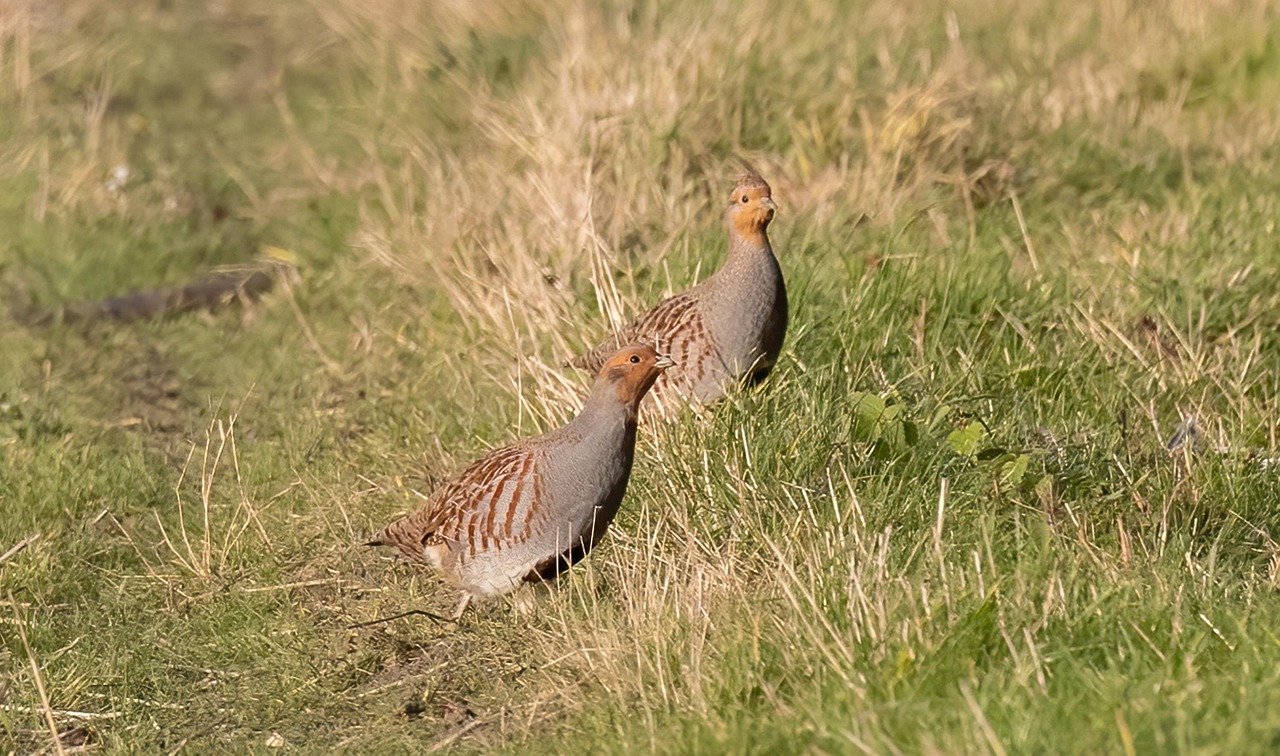Grey Partridge (Rapphöna)

Characteristics:
The Grey Partridge is a medium-sized game bird (length 28–32 cm) with a rounded body, short tail, and strong bill.
Both sexes look similar, with a grey-brown back, rusty-orange face, and grey underparts marked by a chestnut-brown horseshoe patch on the belly (most distinct in males).
It flies with rapid, whirring wingbeats and shows a rounded wing shape in flight.
Habitat:
The Grey Partridge lives in open farmland, preferring areas with grassy field edges, hedgerows, and small thickets for cover.
In Sweden, it is most common in southern and central regions, but has declined due to intensive agriculture and loss of habitat structure.
Behaviour:
A ground-dwelling bird, the Grey Partridge forages on the ground and moves in small groups called coveys, especially during winter. It runs quickly and flies only short distances when disturbed.
Diet:
Feeds on seeds, green plant material, insects, and small invertebrates.
During summer, insects and larvae are vital for chick growth.
Reproduction:
Breeding occurs in May–June. The female lays 12–18 eggs in a shallow ground nest well hidden in grass or under shrubs.
Incubation lasts about 23–25 days, and the chicks are precocial, leaving the nest shortly after hatching.
Migration:
The Grey Partridge is non-migratory (resident), staying in its home range year-round, though it may move locally if food is scarce.
Distribution:
Found throughout Europe and Asia, though declining in western regions.
In Sweden, it is most common in Skåne, Östergötland, Västergötland, and on Gotland.
Hunting:
The Grey Partridge is a game species in Sweden and may be hunted from 1 October to 31 January, though hunting is restricted in some areas to protect populations.
Hunting is often conducted with pointing dogs, flushing dogs or in driven hunts with retrievers.
Firearm class (Sweden):
Hunted with a shotgun, typically using pellet size no. 6–7.
Think for the hunting exam:
- Medium-sized field game bird with grey-brown body and orange face.
- Lives in farmland and field edges.
- Eats seeds and insects.
- Resident species, forms coveys in winter.
- Ground-nesting, many eggs.
- Hunted with shotgun, often with pointing dogs.
